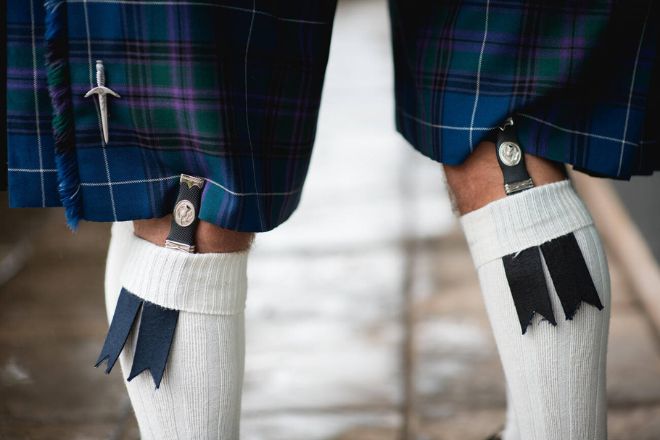
In Scottish culture, the sgian dubh holds a significant place as a weapon, a symbol of honor, and a fashion statement. Literally translated as “black knife,” this has a rich cultural history that spans several centuries. here, we will explore the history, design, symbolism, modern uses, and controversies surrounding the sgian dubh.
The sgian dubh, an integral aspect of Scottish culture and history, is a small knife that has been worn as a component of traditional Scottish Highland dress for centuries. Its name derives from the Scottish Gaelic language and translates to “black knife.” Originating in the 16th century and Its practicality and adaptability led to its widespread use and popularity among the Scots, with the sgian dubh commonly being carried in a pouch (Sporran) or secured within a Kilt hose (kilt socks). Typically fashioned with a sharp blade and wooden handle, some iterations featured decorative embellishments and intricately-carved hilts.
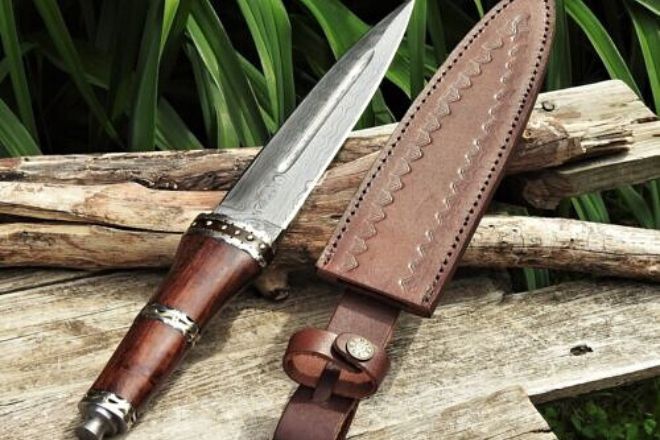
Over time, the dubh has undergone a transformation from a simple tool to an iconic emblem of Scottish culture and heritage. It has become an integral component of the traditional Highland dress and is often embellished with elaborate designs or engraved with historic symbols. In times of strife and conflict, it get even served as a weapon, ultimately leading to legislative restrictions on its public wear. Nevertheless, it remains a cherished and significant aspect of Scottish culture and is often passed down through families as a treasured heirloom. Today, modern versions of the sgian dubh frequently feature commemorative engravings and designs that pay tribute to Scotland’s rich history and culture.
it’s popularity led to more elaborate designs, adorned with intricate engravings and gemstones. While it serves as a decorative item, it’s also a practical tool used for everyday tasks such as cutting rope and opening packages. Many people carry it as part of their everyday carry. The sgian dubh has been featured in movies and TV shows like Braveheart and Outlander, increasing its popularity worldwide. This has led to a demand for custom-made kilt knives with unique designs.
In addition to its unique design, it has a rich cultural significance. It is often given as a gift or passed down through families as an heirloom, and many Scots view it as a symbol of their heritage. The wearing of a dubh as part of traditional Scottish dress also serves as a way of honoring the past and preserving Scottish culture for future generations. Furthermore, the design of the sgian dubh has inspired other knives and daggers, such as the Scottish dirk and the sgian achlais, which share similar design elements and cultural significance.
Some sgian dubhs also have a small notch on the back of the blade, known as a “beannag,” which is used to hook the knife onto the edge of those Scottish Shoes or socks. This feature allows the black blades to be carried discreetly and securely, and is believed to have originated during times when wearing a weapon in public was prohibited. Additionally, some variations of the sgian dubh include a “sgian brew,” which is a small blade that is concealed within the handle and can be used as a backup weapon or for other purposes.

In addition to its use in traditional dress, the sgian dubh is also used in Scottish wedding ceremonies. It is customary for a groom to wear it as part of his outfit, and it is often given as a gift to the groom by the bride’s family as a symbol of trust and goodwill. The groom will typically tuck the sgian dubh into his sock, with the handle visible, and it is considered bad luck to draw the knife during the ceremony. After the wedding, the sgian dubh becomes a cherished keepsake and is often passed down through generations as a family heirloom.
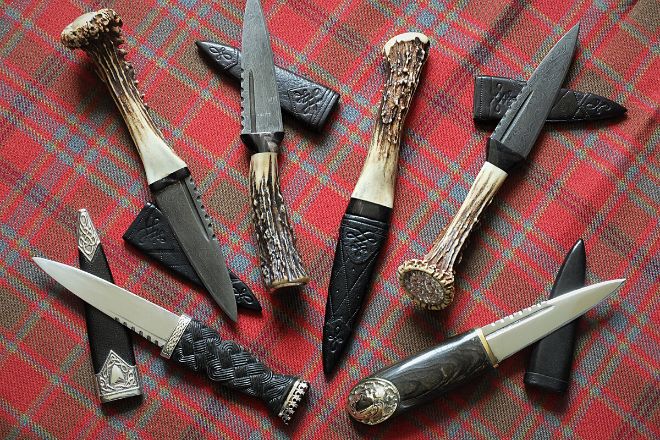
It is a traditional Scottish knife with a long history, dating back to the 16th century. It was originally used as a utility knife for everyday tasks, such as cutting meat and preparing food. However, over time, it became a symbol of Scottish culture and heritage. The name “sgian dubh” translates to “black knife” in Gaelic, referring to the dark handle material used in traditional designs. In addition to weddings and military ceremonies, the black knife is also worn during traditional Scottish events, such as Highland Games and ceilidhs. It is often paired with a kilt, and the design and materials used vary depending on the occasion and personal preference of the wearer.
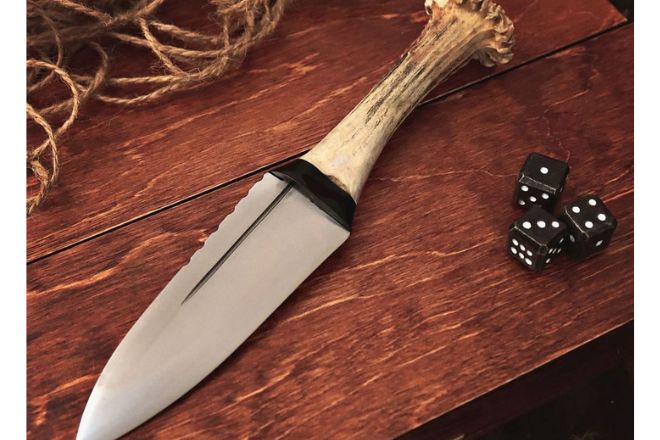
In recent years, there has been a growing movement to revive the practical use of the sgian dubh. Some craftsmen are creating these knives with sharper blades and more durable handle materials, making them suitable for outdoor activities like hunting and camping. Additionally, there are organizations that offer classes and workshops on how to properly use the them as a tool. This revival of the practical use of the sgian dubh is seen as a way to preserve the traditional Scottish craftsmanship and culture associated with the knife.
it holds a unique place in Scottish heritage, serving as an integral part of tradition for centuries. Originally used as a tool for everyday tasks, such as peeling potatoes and cutting meat, the sgian dubh evolved into a symbol of Scottish pride. It is now an essential component of Highland dress, worn by Scotsmen for formal occasions. This accessory is typically worn tucked into the top of the wearer’s kilt hose Also referred as (Scottish Socks), with only the handle visible. Despite its historical roots, the black knife remains a relevant and versatile accessory in contemporary fashion. It does get worn with kilt buckles and belts or even as kilt pins, making it a perfect accessory for modern outfits. Women can also incorporate the sgian dubh as Kilt brooch or hair accessory.
Also, It is important to ensure that the sgian dubh complements the outfit’s color and style, with the handle matching the accessories. Furthermore, it is not only a functional item but also a work of art, featuring intricate designs and embellishments, such as Celtic knots, thistles, or stags. Some versions are made with precious metals or gemstones, adding to their luxury appeal for special occasions. it is a meaningful gift, often given to commemorate important milestones. It is a timeless accessory that represents Scotland’s rich history and serves as a symbol of Scottish pride and heritage.
In recent years, there has been debate and discussion within Scottish communities about the appropriateness of wearing the black blade as a weapon. Some argue that its traditional use as a means of self-defense is no longer relevant or necessary, and that it should be seen primarily as a cultural accessory. Others maintain that the sgian dubh’s functional purpose as a weapon is an important part of its history and should not be ignored. To address concerns about the use of it as a weapon, some makers have created blunted versions of the blade that cannot be sharpened or used as a weapon.
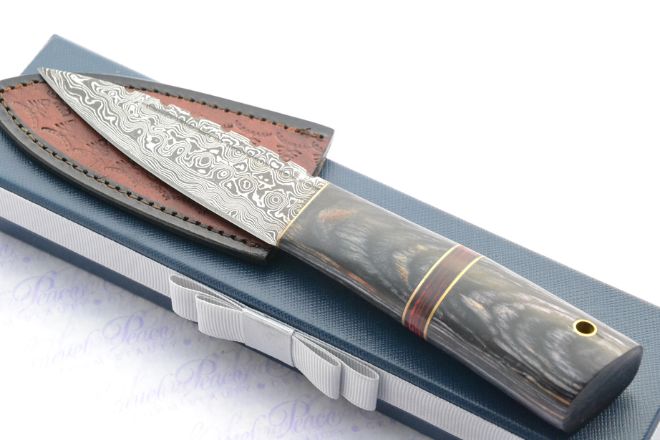
These versions are often used by performers or those who wear them as a purely decorative item. Despite these debates, the sgian dubh remains an important part of Scottish heritage and culture. It continues to be worn with pride by those who honor their Scottish roots and traditions, and serves as a reminder of Scotland’s rich history and traditions.
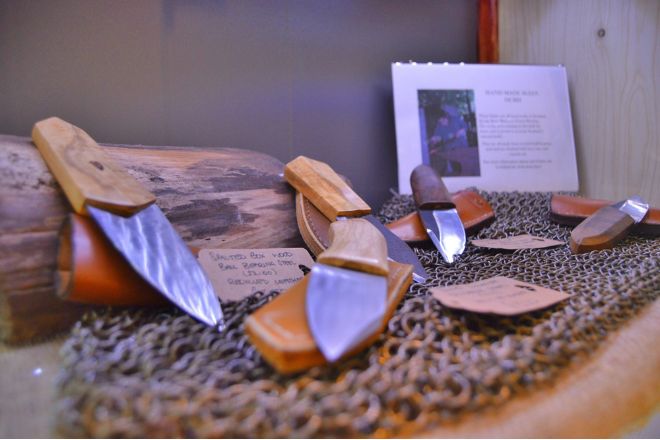
Although historically used as a weapon, the association of the sgian dubh with violence is mostly a misconception. Nowadays, it is mainly used as a decorative or symbolic item for Scottish heritage. Communities in Scotland emphasize responsible ownership and use of the sgian dubh and promote its cultural significance as a symbol of Scottish heritage rather than a weapon.
Sgian dubh translates to “black knife” in Gaelic.
The legality of carrying a sgian dubh in public varies depending on the location. In Scotland, it is legal to carry a sgian dubh as part of traditional dress, but in other places, it may be illegal.
The groom traditionally wears a sgian dubh as part of his dress during a Scottish wedding. It is often gifted to him by the bride’s family.
Yes, there are many online retailers that sell sgian dubhs. However, it is important to ensure that the retailer is reputable and that the sgian dubh meets legal requirements in your location.
Input your search keywords and press Enter.
